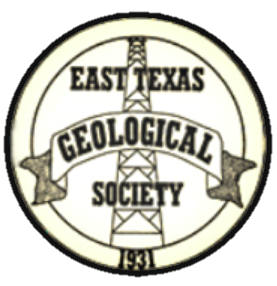Last year, in November, Josh Rosenfeld spoke to us about the isolation of the Gulf of Mexico from the world’s oceans and the subsequent drawdown of the waters in the Gulf that resulted from that isolation (you can review the slides from his talk on our website). He based his hypothesis on:
- the excavation of deep canyons across contemporary continental shelves and slopes – like the Yoakum, St. Landry, Chicontepec channels,
- the sudden and thick deposition of thick, widespread, high net-sands in the deep Gulf Basin hundreds of kilometers beyond the contemporaneous shelf edge
- salt deposited in the Tertiary Veracruz Basin
- a regional unconformity in the carbonate-dominated eastern Gulf Basin
As Josh noted, “general acceptance of the Paleocene-Eocene Gulf drawdown has met resistance”… That resistance is common for many new ideas that are espoused in geology and science in general.
I thought it fitting, since we are all scientists, to quickly review the SCIENTIFIC PROCESS (with a little help from Wikipedia). The process consists of:
- Making observations of patterns in nature (the rock record).
- Asking why that pattern occurs.
- Formulation of a hypothesis.
- Development of testable predictions.
- Gather data to test those predictions.
- Refine, alter, expand or reject the hypothesis.
- Develop general theories based on all available data and current theories.
The speaker for our November 18th, 11:30 AM luncheon, which will be, as usual, at The Cascades Country Club, will be Dr. Stephen Cossey who is a principle at Cossey & Associates from Durango, Colorado. Steve will be talking about field work he has done on outcrops of the Paleocene/Eocene Chicontepec Formation (equivalent to the Wilcox) in eastern Mexico. His work, following the scientific process listed above, tends to corroborate the hypothesis espoused by Rosenfeld and Pindell in 2003. The title of his paper is “Compelling Evidence from Eastern Mexico for a Late Paleocene/Early Eocene Isolation, Drawdown and Refill of the Gulf of Mexico”.
To me, it is one of the coolest things in science (geology) is to see someone come up with an “out of the box” idea, have that idea resisted by the more conventional thinkers (which we all are from time to time), and then see that idea substantiated, and possibly raised to the “Theory” status by independent work of others (or even the originator of the idea). That’s what is so fascinating about our discipline – always pushing the boundaries and exploring new frontiers!
One other piece of information. Al Jasper, our Education Coordinator, suggested at our October meeting that if there was interest from Tyler (and surrounding area) members of our Society, he would initiate discussions with SFA to start a Master of Science degree program here in Tyler. He says that if there is sufficient interest in the program, he may be able to get SFA professors to come up to Tyler for the coursework. If you have any interest in this program, please contact Al, or you can let me know and I can direct you to Al.
Thanks for the exceptional turnout for Dan Jarvie last month, and please don’t forget to make your reservations on our website.
Best Regards,
Dale Short
President, East Texas Geological Society
